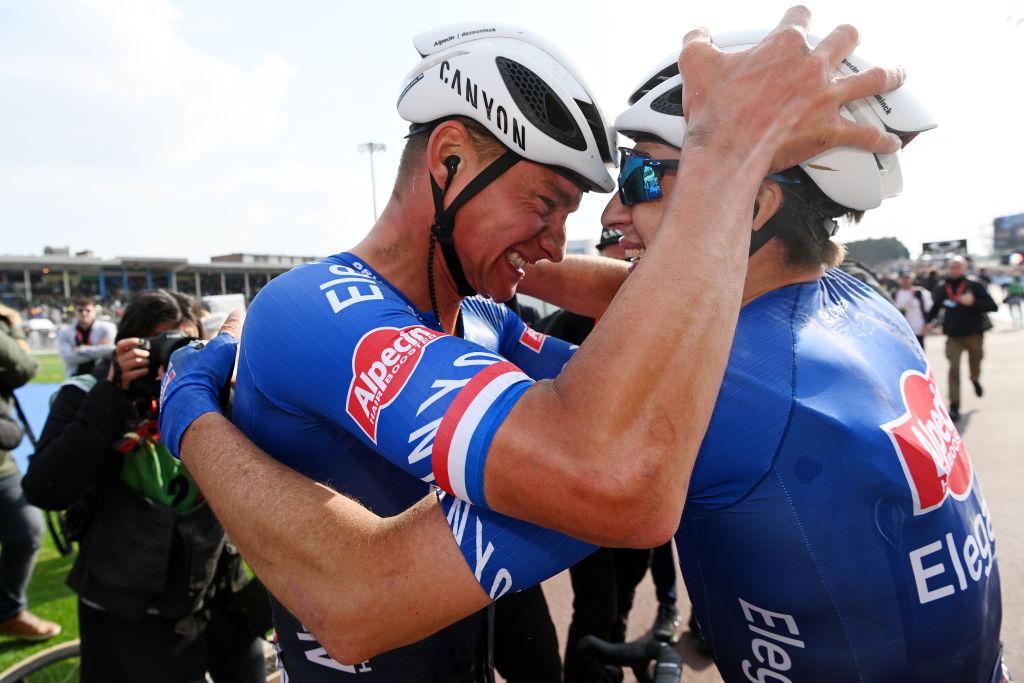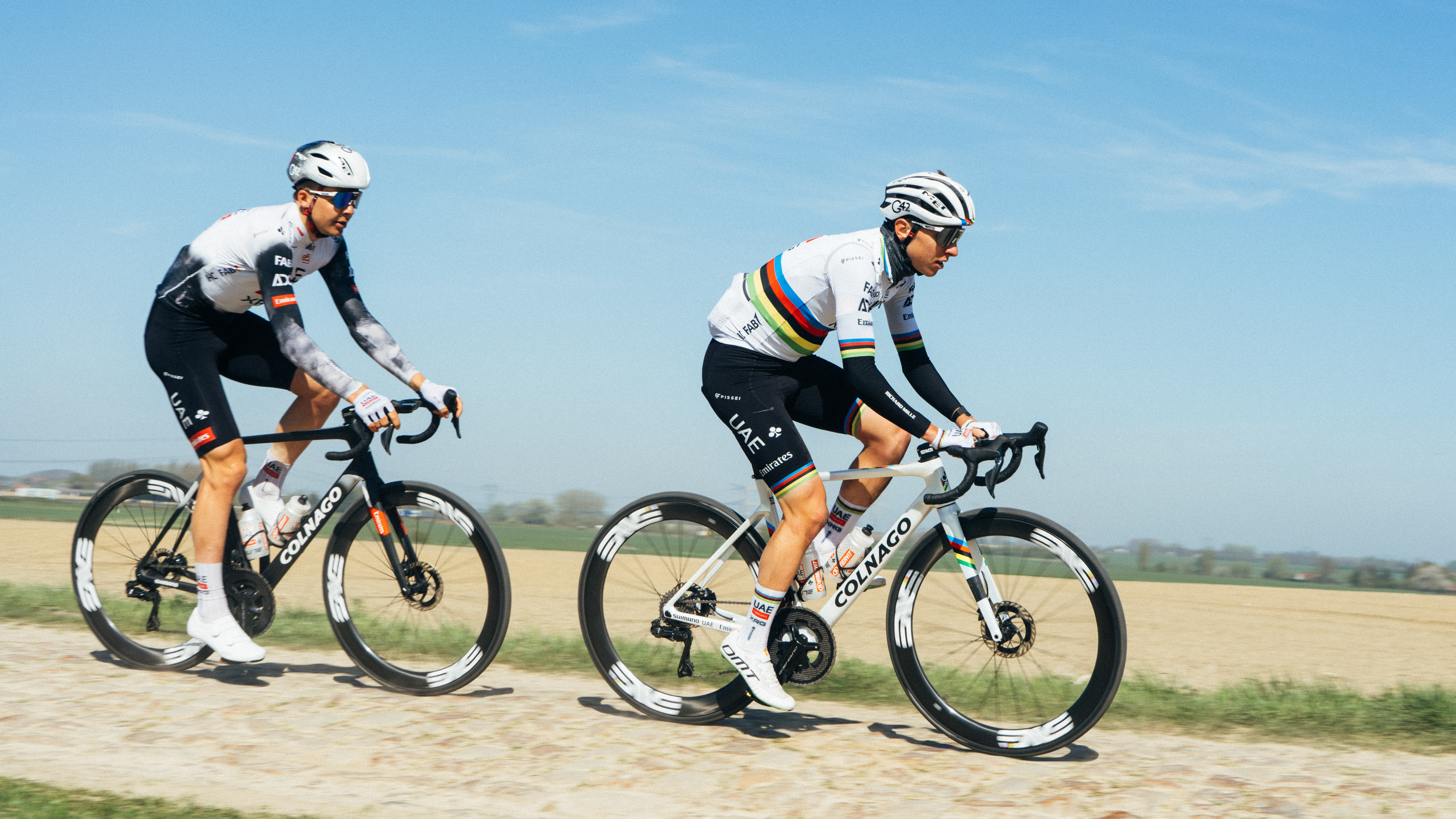Strade Bianche 2021 – Preview
Alaphilippe, Bernal, Pogacar, Van der Poel, and Van Aert among contenders on white gravel of Tuscany
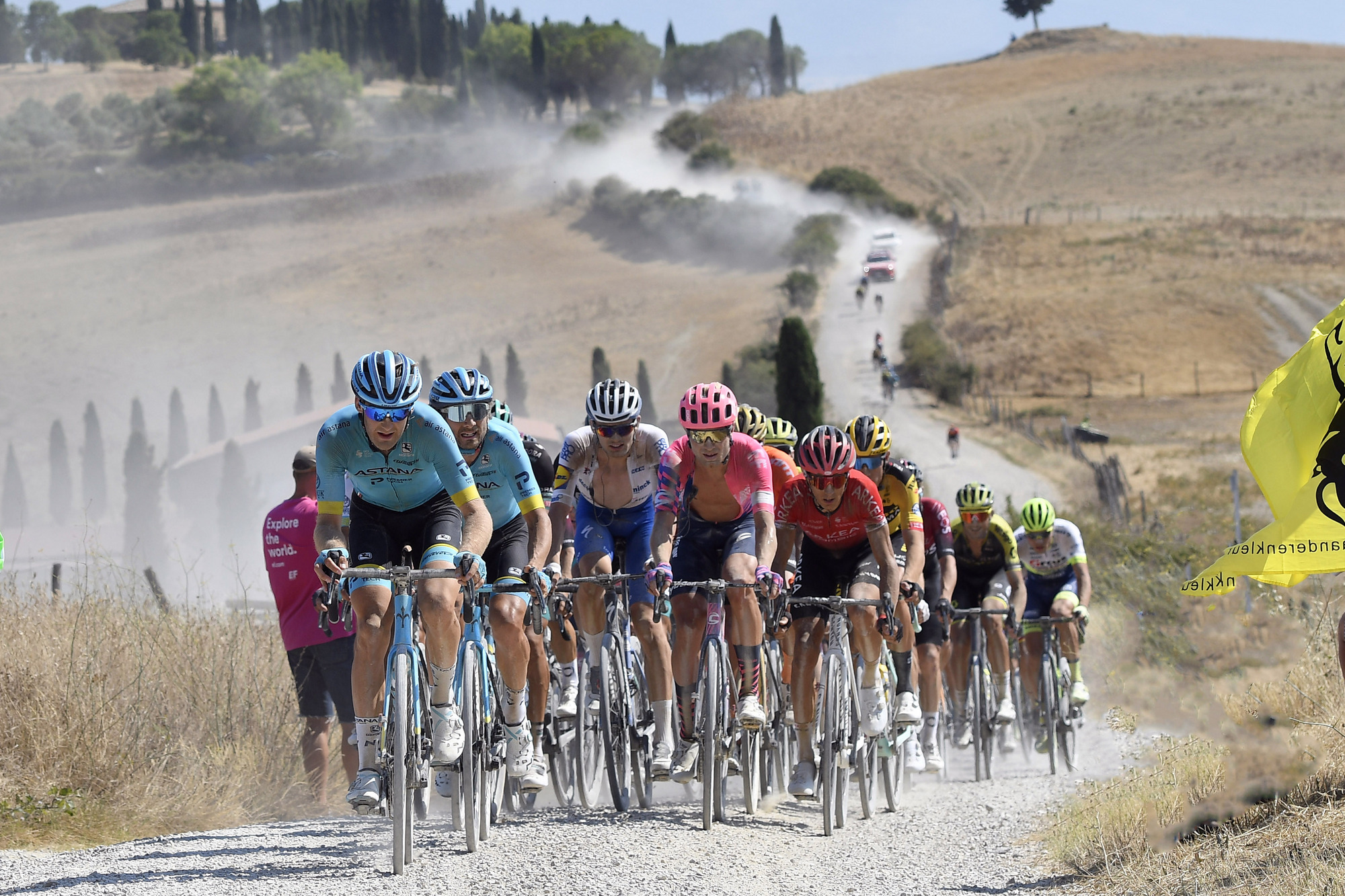
This year’s Strade Bianche returns to its traditional spring date on Saturday, with cold rain set to replace the heat and high temperatures of August 2020 when the Italian race kicked off the rescheduled competition calendar after the spring COVID-19 lockdown.
This year marks only the 15th edition of Strade Bianche but the Tuscan race has already earned ‘Classic’ status thanks to the breathtaking rolling dirt roads – with the clouds of dust evoking races of old – and the steep climb through the vineyards up to the finish in Renaissance Siena.
The presence of Mathieu van der Poel (Alpecin-Fenix), Wout van Aert (Jumbo-Visma), Julian Alaphilippe (Deceuninck-QuickStep), Egan Bernal (Ineos Grenadiers), Jakob Fuglsang (Astana-Premier Tech) and Tadej Pogačar (UAE Team Emirates) should create another aggressive race. Peter Sagan is the only major absence, after only recently recovering from COVID-19.
The lighter Grand Tour climbers are suited to the hard gravel ascents but need the courage to dive down the dirt and rut-filled descents. In contrast the likes of Van der Poel have the bike skills but will perhaps suffer on the double-digit climbs.
The weather has been warm and sunny for the last 10 days in Tuscany, leaving the dirt roads relatively dry and compact. However, rain is forecast for Friday and Saturday with temperatures struggling into double figures.
Mid-week snow turned the 2018 Strade Bianche into a weekend mud-fest, with Tiesj Benoot winning alone at the Piazza del Campo in Siena after distancing Romain Bardet and a young Van Aert on the final steep dirt section. Alaphilippe started his long run of success with victories in 2019, while last summer Van Aert overcame his embarrassing 2018 standstill on the final climb to win alone, just a week before also taking Milan-San Remo.
Now Van der Poel appears to be an added threat, and this year’s Strade Bianche is set to be the latest round in the Van der Poel-Van Aert duel. Van der Poel travels to Italy after impressing at the UAE Tour, Kuurne-Brussel-Kuurne and Le Samyn in different ways, while Van Aert has been smashing his own Strava record during a three-week altitude training camp on Mount Teide.
The roads of Tuscany will confirm which is the best path to the Classics.
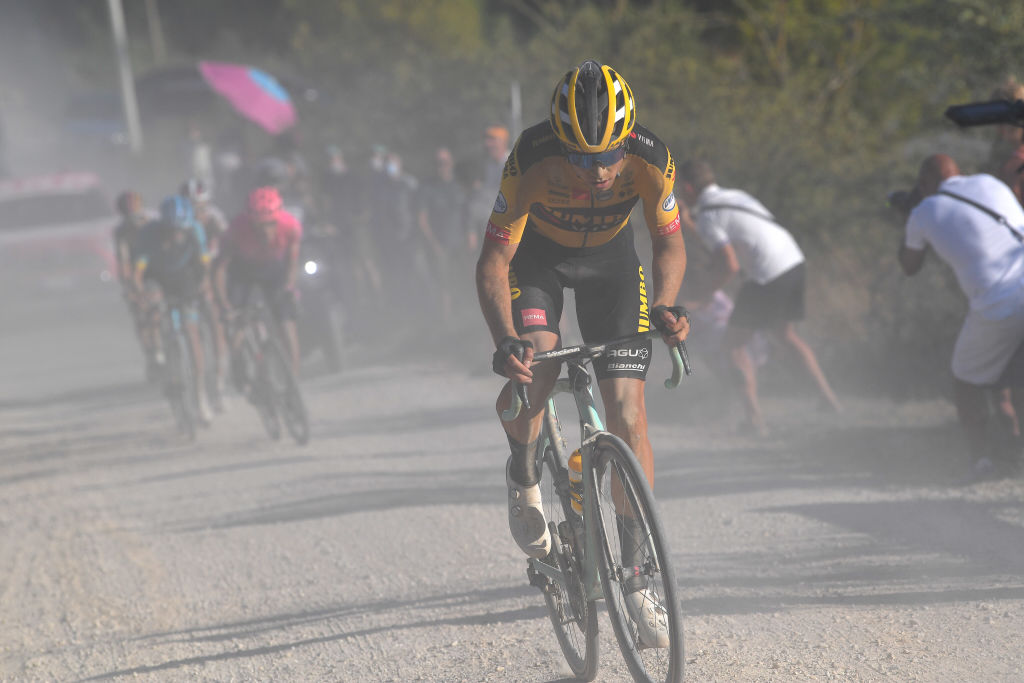
Other names to watch for include the USA’s Quinn Simmons (Trek-Segafredo),
Valentin Madouas (Groupama-FDJ) and Matej Mohorič (Bahrain Victorious).
Everyone else will surely try to take advantage of the rivalry between Van der Poel and Van Aert, with Alaphilippe no doubt told by his Deceuninck-QuickStep directeur sportif to use his strength and tactics far more wisely than he did at Omloop Het Nieuwsblad.
Previous marquee winners include Fabian Cancellara, Philippe Gilbert and Michal Kwiatkowski, but the unpredictable nature of Strade Bianche means there is always room for a dark horse.
Fuglsang has no doubt learnt a lesson from attacking too early last summer and cannot be ruled out. Tim Wellens (Lotto Soudal) showed he has early-season form by winning the Étoile de Bèsseges, while Greg Van Avermaet (AG2R Citroën) should not be written off.
Deceuninck-QuickStep have 2015 winner Zdenek Štybar, João Almeida and Omloop Het Nieuwsblad winner Davide Ballerini in their lineup to support or alternate for Alaphilippe. Pogačar is clearly on form after winning the UAE Tour and UAE Team Emirates also have the USA’s Brandon McNulty and Davide Formolo, who was second behind Alaphilippe last year.
It will be fascinating to see what Tom Pidcock and Bernal can do on the dirt roads of Strade Bianche for Ineos Grenadiers. The steep climbs will surely test Bernal’s back but Pidcock, like Van der Poel and Van Aert, has successfully carried his cyclo-cross form onto the road.
The young Yorkshire rider has all the skills needed for Strade Bianche, including the ability to dance up the final climb to the centre of Siena.
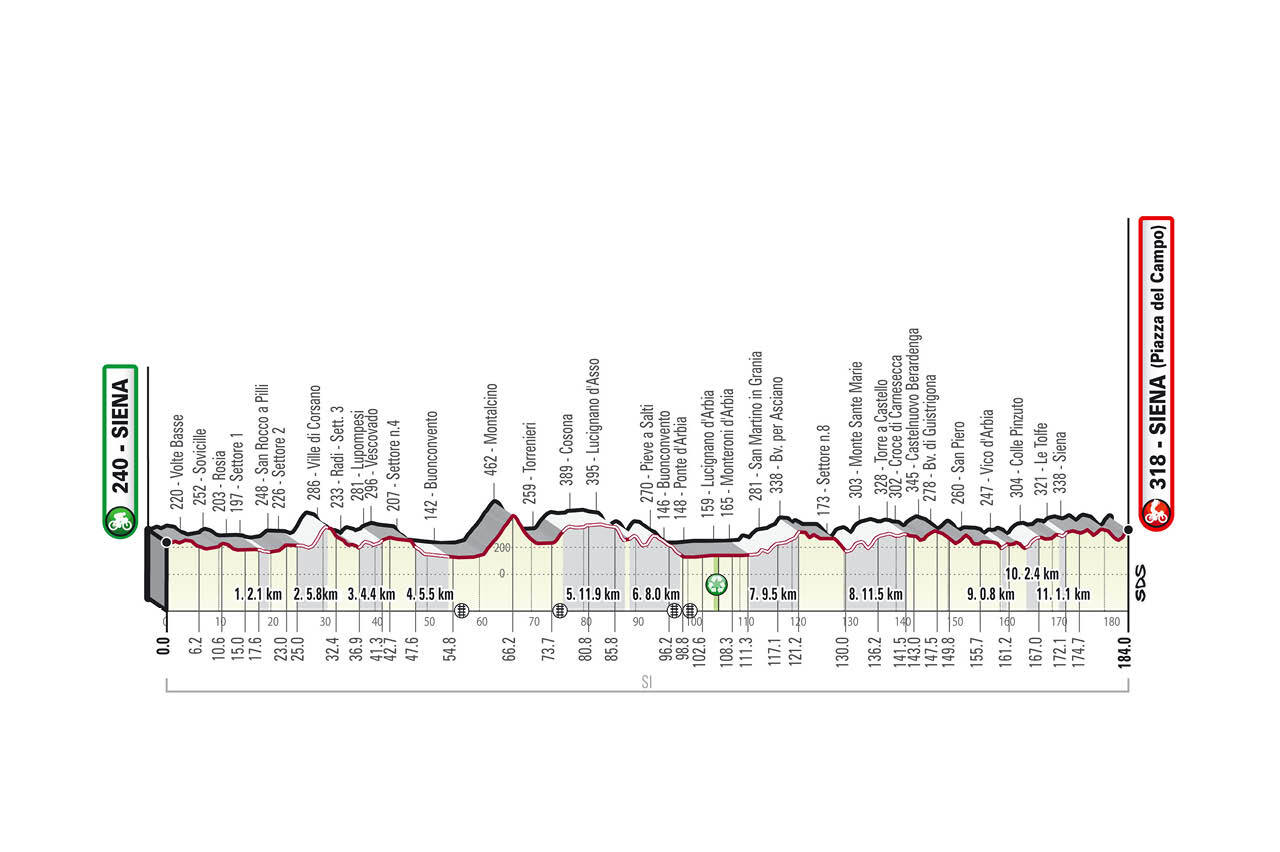

The route: 63km of dirt roads in the Senesi hills
The 2021 Strade Bianche route remains the same as for recent editions, with 63 kilometres of white gravel dirt roads spread across the 11 sectors of the 184 kilometre race.
As the race profile shows, Strade Bianche is packed with short, steep hills that combine with the dirt roads to create one of the hardest days of racing of the year. There is little respite along the shark tooth profile.
The men roll out of the Fortezza Medicea facing five hard hours in the saddle, with the finish in the Piazza del Campo square – which hosts the annual Palio horse race – at around 4:30pm CET.
The 184 kilometre route heads south towards Montalcino to cover the early sectors of dirt roads and then turns east to search out two of the longest and hardest sectors before returning to Siena via Asciano and the decisive, shorter sectors of dirt roads close to the Renaissance city.
The opening sector of dirt road comes after a fast, largely downhill 17.6 kilometres from central Siena and gives the riders a taste of what's to come. The early break of the day is usually formed and gaining time by this point.
The climb up to the Montalcino is on normal roads and not the dirt road ascent that will feature during this year’s Giro d’Italia. However the capital of Brunello wines marks the start of the second phase of the race, with the 11.9-kilometre-long Lucignano d’Asso and the 8-kilometre-long Pieve a Salti sections separated by just one kilometre on paved roads. They come in the stunning Crete Senesi hills, which are often exposed to the winds and include nerve-testing descents. These two sectors will quickly expose who has the form to be a contender later, or who will climb off at the feed zone after 100 kilometres and ride back to Siena.
After a long road sector up to Monteroni, the route turns right to start sector seven (9.6 kilometres long) with 70 kilometres to race. It climbs virtually all the way via the fields awaiting the summer grains, deep woods and vineyards that make the race photographs so stunning. The subsequent descent to the 11.5-kilometre-long Monte Santa Maria sector is on paved road, but the dirt roads begin to climb immediately after the cemetery on the left.
The first important selection in the peloton usually happens across these two sectors, with only the strongest left up front after the 21 kilometres of climbing and descending. There is no way back here for anyone dropped or chasing after a crash, puncture or mechanical problem.
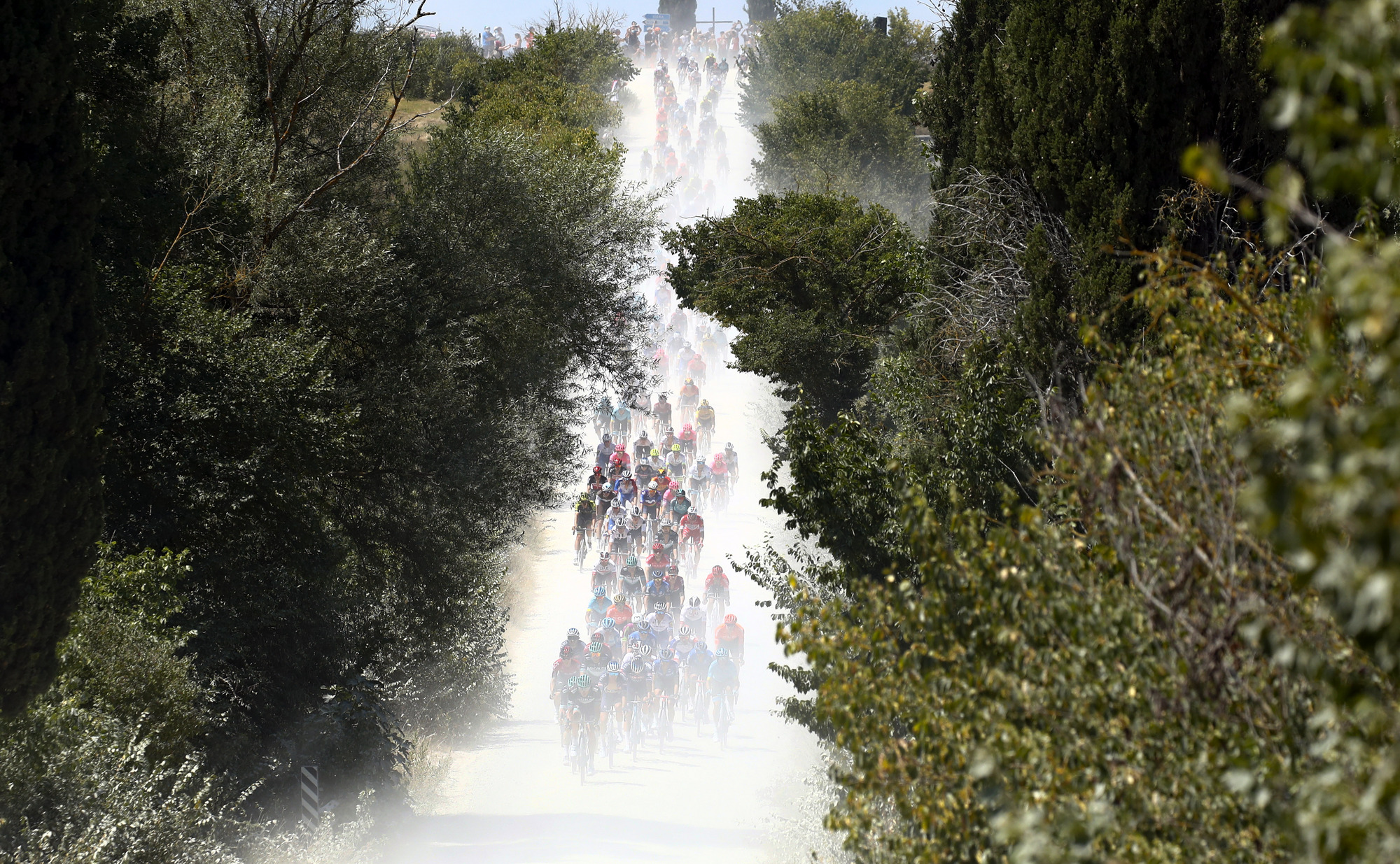
Normal roads for 20 kilometres offer a tactical pause and can sometimes deaden the racing before the final 25 kilometres and the three short but steep final sectors of strade bianche.
Sector nine at historic Monteaperti kicks things off before Colle Pinzuto, which includes a climb at 15 per cent. The brave solo attacks will come here but rarely come off.
There are only 12 kilometres of asphalt roads left to Siena after the last dirt sector in Le Tolfe, and so whoever makes it over the 18 per cent 1.1-kilometre-long section in the front group here will go on to fight for victory.
Strade Bianche is never decided in a sprint because the steep road to the centre of Siena is on narrow streets with a rough paved surface. The Via Santa Cristina kicks up at nine per cent with a kilometre to go and reaches a 16 per cent gradient as the race turns right into central Siena with just 500 metres to go.
The packed crowds usually cheer on the riders as they try to fight the gradient and final attacks are made. With Siena in lockdown, the tifosi will have to watch from home, with the only crowds likely to be local residents hanging out of their windows above Via Santa Cristina.
The first rider to the top of the climb often wins Strade Bianche because positioning is key on the final road through the central streets of Siena. As the road eases there is a final chance to move up to the front but it takes guts and good brakes to avoid crashing on the final right turn.
Whoever makes it first into Piazza del Campo can celebrate as they descend to the finish line at the lowest point of the stunning square outside the ancient town hall building and tower.
Get The Leadout Newsletter
The latest race content, interviews, features, reviews and expert buying guides, direct to your inbox!

Stephen is one of the most experienced member of the Cyclingnews team, having reported on professional cycling since 1994. He has been Head of News at Cyclingnews since 2022, before which he held the position of European editor since 2012 and previously worked for Reuters, Shift Active Media, and CyclingWeekly, among other publications.
Latest on Cyclingnews
-
Van der Poel and Philipsen fight back from illness and injury to bid for third Alpecin-Deceuninck Paris-Roubaix win
Pair have finished one-two at both previous editions of the Hell of the North -
Gallery: Tadej Pogačar's bike setup for his first ever Paris-Roubaix
Plus some bonus hacks from the UAE Team Emirates-XRG recon ride -
What Tadej Pogačar's final Paris-Roubaix recon reveals about possible team strategy
'I think he can win it,' UAE Team Emirates DS Fabio Baldato says after riders test tactics and tyres -
Lotte Kopecky: 'A pressure has fallen off' for Paris-Roubaix after Tour of Flanders win
World Champion is aiming to become the first woman to do the Flanders-Roubaix double on Saturday
